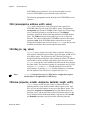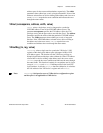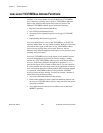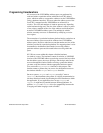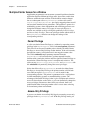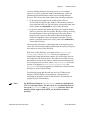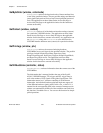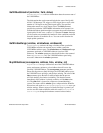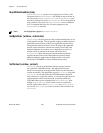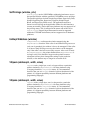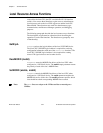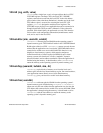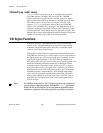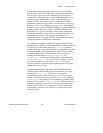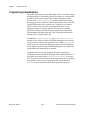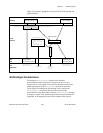
Chapter 3 Software Overview
NI-VXI User Manual 3-32 © National Instruments Corporation
MapVXIAddressSize (size)
MapVXIAddressSize
sets the size for mapping user windows. The
subsequent calls to
MapVXIAddress
will attempt to map a window of
the size passed to
MapVXIAddressSize
.
MapVXIAddressSize
only
provides a preferred size to the
MapVXIAddress
. If it is not possible to
map a window to the given size,
MapVXIAddress
can use a different
size. To determine the exact size of window mapped, use the
GetWindowRange
function.
Note:
Not all platforms support
MapVXIAddressSize
.
SetByteOrder (window, ordermode)
SetByteOrder
sets the byte/word order of data transferred into or out
of the specified window. The two possible settings are Motorola (most
significant byte/word first) or Intel (least significant byte/word first).
The application must have Owner-Access Privilege to the applicable
window for this function to execute successfully. Notice that some
hardware platforms do not allow you to change the byte order of a
window, which is reflected in the return code of the call to
SetByteOrder
. Most Intel processor-based hardware platforms
support both byte order modes. Most Motorola processor-based
hardware platforms support only the Motorola byte order mode,
because the VXI/VMEbus is based on Motorola byte order.
SetContext (window, context)
SetContext
sets all of the hardware interface settings (context)
for a particular VXI/VME window. The application must have
Owner-Access Privilege to the applicable window for this function to
execute successfully. Any application can use
GetContext
along with
SetContext
to save and restore the VXI/VME interface hardware
state (context) for a particular window. As a result, the application can
set the hardware context associated with a particular pointer into
VXI/VME address spaces (obtained from
MapVXIAddress
). After
making a
MapVXIAddress
call for Owner Access to a particular
window (and possibly calls to
SetPrivilege
and
SetByteOrder
),
you can call
GetContext
to save this context for later restoration by
SetContext
.



